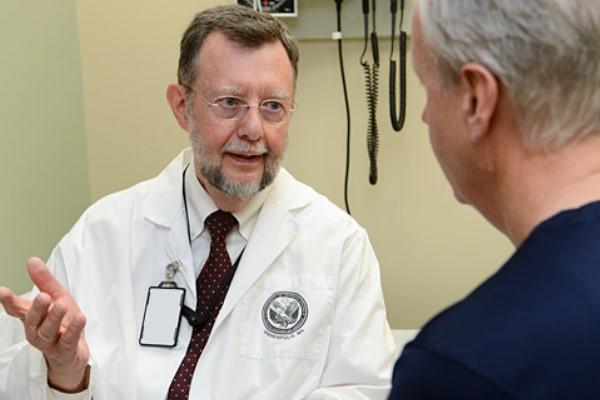The Government Accountability Office on Thursday warned a House of Representatives panel on veterans' health that a lack of oversight in ensuring veterans hospitals have the right number of professional and support staff to provide primary care may be putting patients at risk.
Randall Williamson, director of health care for the GAO, told the House Veterans Affairs Subcommittee on Health that six of seven Veterans Affairs Department medical centers reviewed recently provided flawed, incomplete or erroneous information reflecting how many patients its teams of doctors, nurses and support staff serve.
"Determining how many patients to which each primary care team can reasonably deliver care -- referred to as panel size -- is critical ensure our nation's veterans receive timely quality care that is delivered in an efficient manner," Williamson told the House Veterans Affairs Subcommittee on Health.
At one hospital, he said, the vacancy rate of primary care providers was 40 percent.
"The situation is too reminiscent of veterans' access issues arising at other VAMCs [Veterans Affairs medical centers] in the past," he said, doubtless referring to the wait-times scandal that broke last year in Phoenix, Arizona. The Phoenix VA hospital sought to conceal the fact it could not meet patient demand with its staff by keeping a secret list of veterans seeking care.
Delays in care contributed to the deaths of some patients there, VA concluded. The VA Inspector General report also found that the Phoenix practice was systemic across the VA.
The GAO, in a recommendation to which VA said it agreed, said the panel size problem could be addressed by the VA incorporating an oversight process for primary care panel management that assigns appropriate responsibility to the VA central office and VA integrated networks for verifying each facility's reported panel size data.
Williams offered his warning during testimony where he presented a GAO report that concluded the VA cannot accurately monitor the efficacy and costs of providing primary care because the measurable data is unreliable across the department's entire 150 medical centers.
Williamson said that data from six of the seven hospitals GAO reviewed had to be corrected before the agency could determine exactly how many patients were being seen by their teams of doctors, nurses and support staff.
The number of patients seen per team represents a patient panel, he said. Though set by the VA's central office based on the available staffing and exam room data and patient numbers for each facility, the hospital itself "may deviate" from the number, according to Williams.
GAO found in compiling its report that some data it required was missing and other data not accurate or reliable. For example, he said, some facilities listed patients who had died or not been seen in two years and also provided erroneous information on the number of examination rooms available.
After correcting for bad data the agency found that patient panels at the hospitals were anywhere from 23 percent lower than they should have been or 11 percent higher. In real numbers, panel sizes were between 1,000 patients per team to 1,338, he said.
Too many patients per team may lead to veterans experiencing delays in care, while too few patients may mean inefficiencies and wasted resources, he said.
"Some VAMCs attempted to establish smaller panels to avoid staff burnout and attrition," he said. Those with high panel sizes were dealing recruiting and retention challenges, he said, often because they are in rural locations or unable to compete with higher pay in the private sector.
Dr. Thomas Lynch, Assistant Deputy Under Secretary for Health Clinical Operations at the VA, told lawmakers the department "is aware of a number of deficiencies" in collecting the data and is committed to fixing them.
"The PCM [primary care management] model … will help us basically look at the panels and make sure they are properly impaneled," Lynch said. "This will help us eliminate those patients who have died or have not used VA care."
--Bryant Jordan can be reached at bryant.jordan@military.com. Follow him on Twitter at @bryantjordan.


























